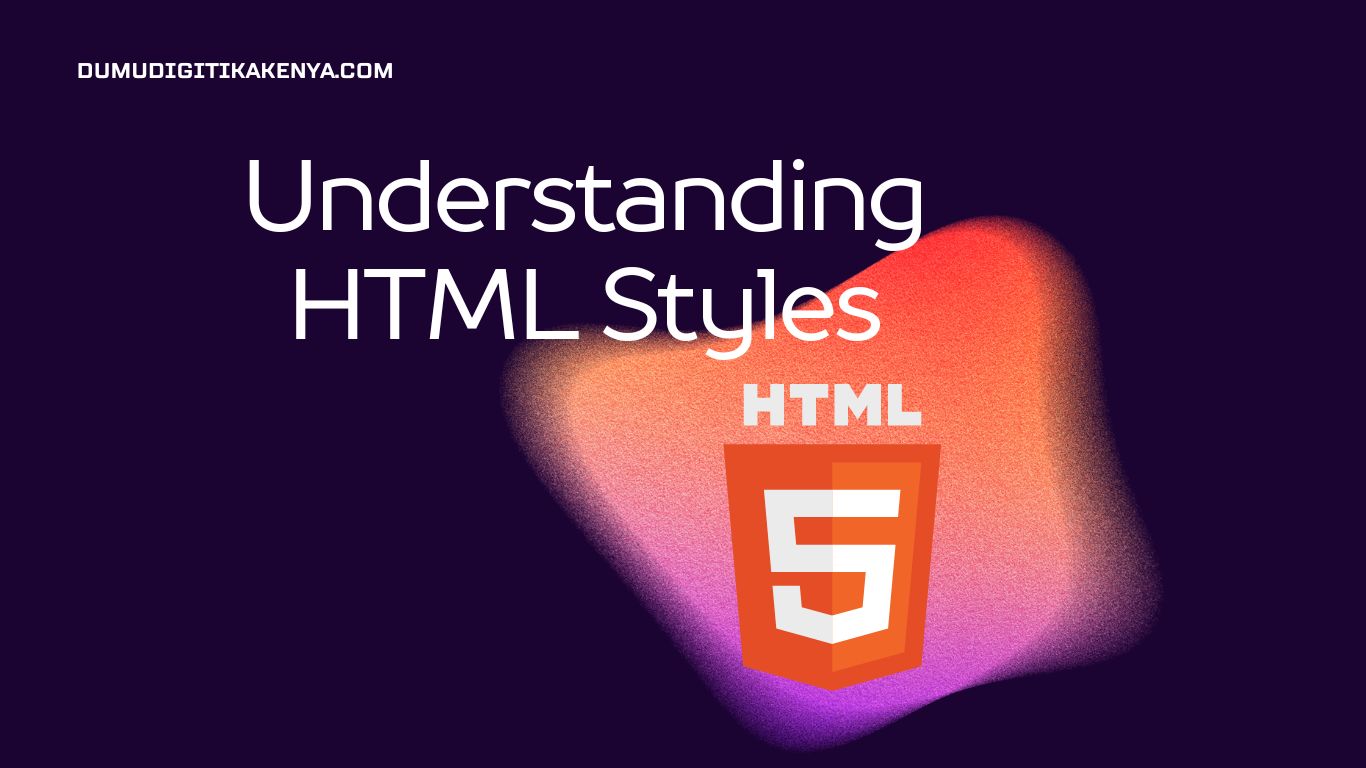Introduction To HTML Styles:
Welcome to our comprehensive guide on HTML Styles, where we’ll unlock the fascinating world of web design and development. HTML Styles are the secret sauce that transforms plain web pages into captivating online experiences. Whether you’re a complete beginner or looking to brush up your skills, this article is your ticket to mastering the art of HTML Styles. In this guide, we’ll delve deep into the three essential aspects of HTML Styles: Inline Styles, Internal Styles, and External Styles, providing step-by-step instructions and real-world examples for each. By the end, you’ll have the confidence to infuse life into your web content, making it visually stunning and engaging.
HTML Styles are the cornerstone of modern web design, enabling you to tailor your website’s look and feel to your exact specifications. As search engines and users alike prioritize visually appealing and well-structured websites, mastering HTML Styles is not just a skill but a necessity for any web developer. We’ll walk you through each style type, starting with Inline Styles, which allow you to apply quick and specific style changes directly to individual HTML elements. Next, we’ll explore Internal Styles, perfect for consistent styling across multiple elements within a single web page. Lastly, we’ll venture into External Styles, the powerhouse technique for maintaining design consistency across your entire website. So, let’s dive in and discover how HTML Styles can elevate your web development game to new heights.

Table of Contents
Prerequisites:
Before we begin, make sure you have a basic understanding of HTML fundamentals. If not, you might want to review our tutorial on “HTML Basics” for a solid foundation.
HTML Styles:
HTML styles allow you to control the presentation of your web content. Styles are defined using CSS (Cascading Style Sheets), which can be applied to HTML elements to change their appearance. In this tutorial, we’ll cover three fundamental aspects of HTML styles:
- Inline Styles:
Inline styles are applied directly to individual HTML elements using thestyleattribute. They are useful for making quick and specific style changes. Sample Code:
<p style="color: blue; font-size: 18px;">This text is blue and has a font size of 18px.</p>Explanation:
<p>is an HTML paragraph element.styleattribute is used to define inline styles.color: blue;sets the text color to blue.font-size: 18px;adjusts the font size to 18 pixels. Output:
This text is blue and has a font size of 18px.
- Internal Styles:
Internal styles are defined within the<style>element in the HTML document’s<head>. They apply to multiple elements within the same page. Sample Code:
<!DOCTYPE html>
<html>
<head>
<style>
p {
color: green;
font-size: 24px;
}
</style>
</head>
<body>
<p>This text is green and has a font size of 24px.</p>
</body>
</html>Explanation:
<style>element is placed in the<head>section.- CSS rules inside
<style>target all<p>elements. color: green;changes the text color to green.font-size: 24px;sets the font size to 24 pixels. Output:
This text is green and has a font size of 24px.
- External Styles:
External styles are defined in a separate CSS file and linked to the HTML document. They are ideal for maintaining consistency across multiple web pages. Sample Code (HTML):
<!DOCTYPE html>
<html>
<head>
<link rel="stylesheet" type="text/css" href="styles.css">
</head>
<body>
<p>This text follows styles defined in an external CSS file.</p>
</body>
</html>Sample Code (styles.css):
/* styles.css */
p {
color: purple;
font-size: 20px;
}Explanation:
- An external CSS file named
styles.cssis linked to the HTML document. - CSS rules in
styles.cssapply to all<p>elements. color: purple;changes the text color to purple.font-size: 20px;sets the font size to 20 pixels. Output:
This text follows styles defined in an external CSS file.
Conclusion
In conclusion, this comprehensive guide has provided you with a solid foundation in HTML Styles, a fundamental aspect of web development. With a firm grasp of Inline Styles, Internal Styles, and External Styles, you are now equipped with the knowledge and skills to enhance the visual appeal of your web content. Remember, HTML Styles not only make your websites aesthetically pleasing but also contribute to improved user experiences and search engine optimization.
As you embark on your journey to become a proficient web developer, don’t stop here. Continue to practice and experiment with HTML Styles to refine your design abilities. Explore advanced CSS techniques, responsive design principles, and accessibility standards to further elevate your web development skills. With dedication and creativity, you can craft stunning websites that stand out in the digital landscape. Keep nurturing your passion for HTML Styles, and watch as your web projects flourish and attract a wider audience. Thank you for joining us on this journey of mastering HTML Styles, and we look forward to seeing your beautifully styled web creations in the future.




